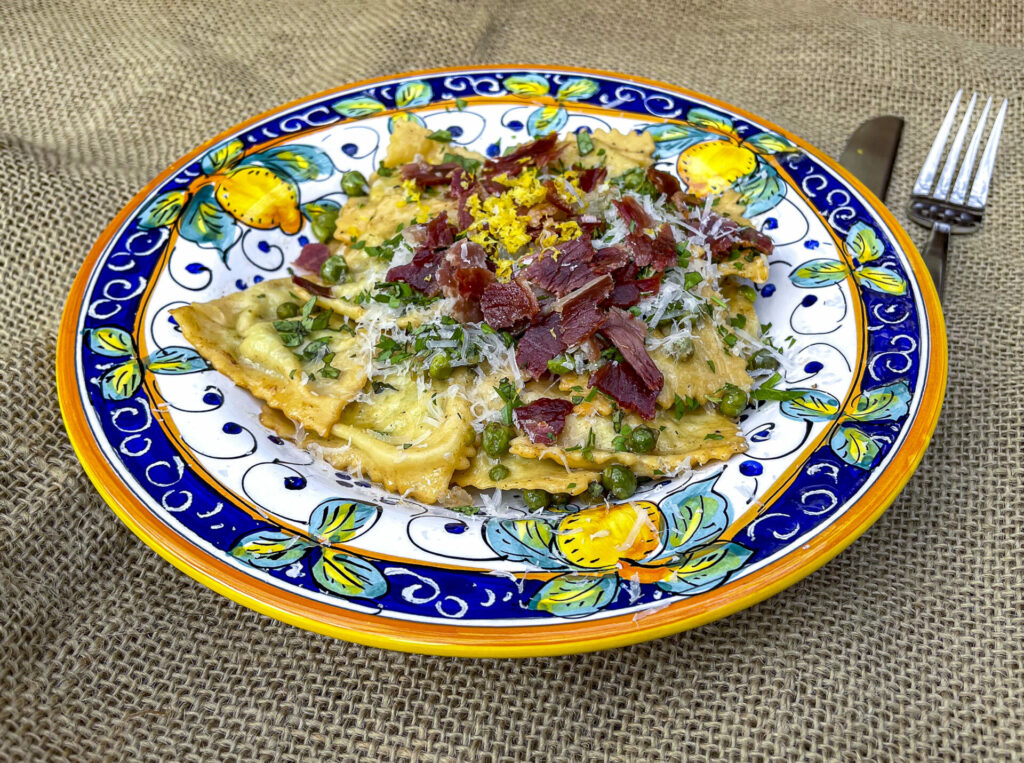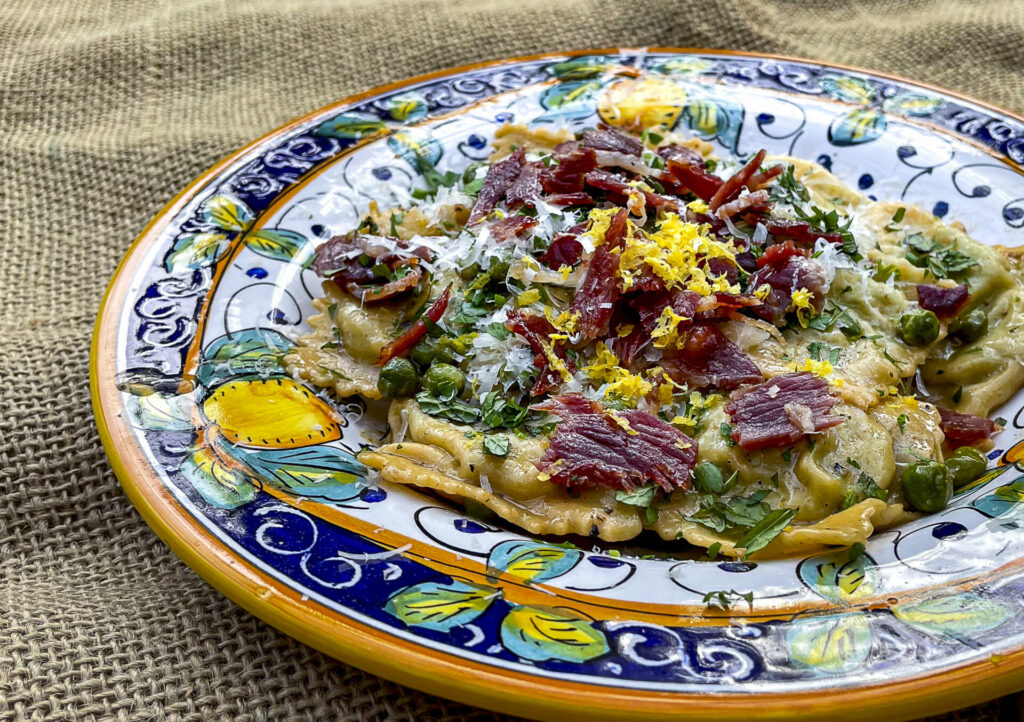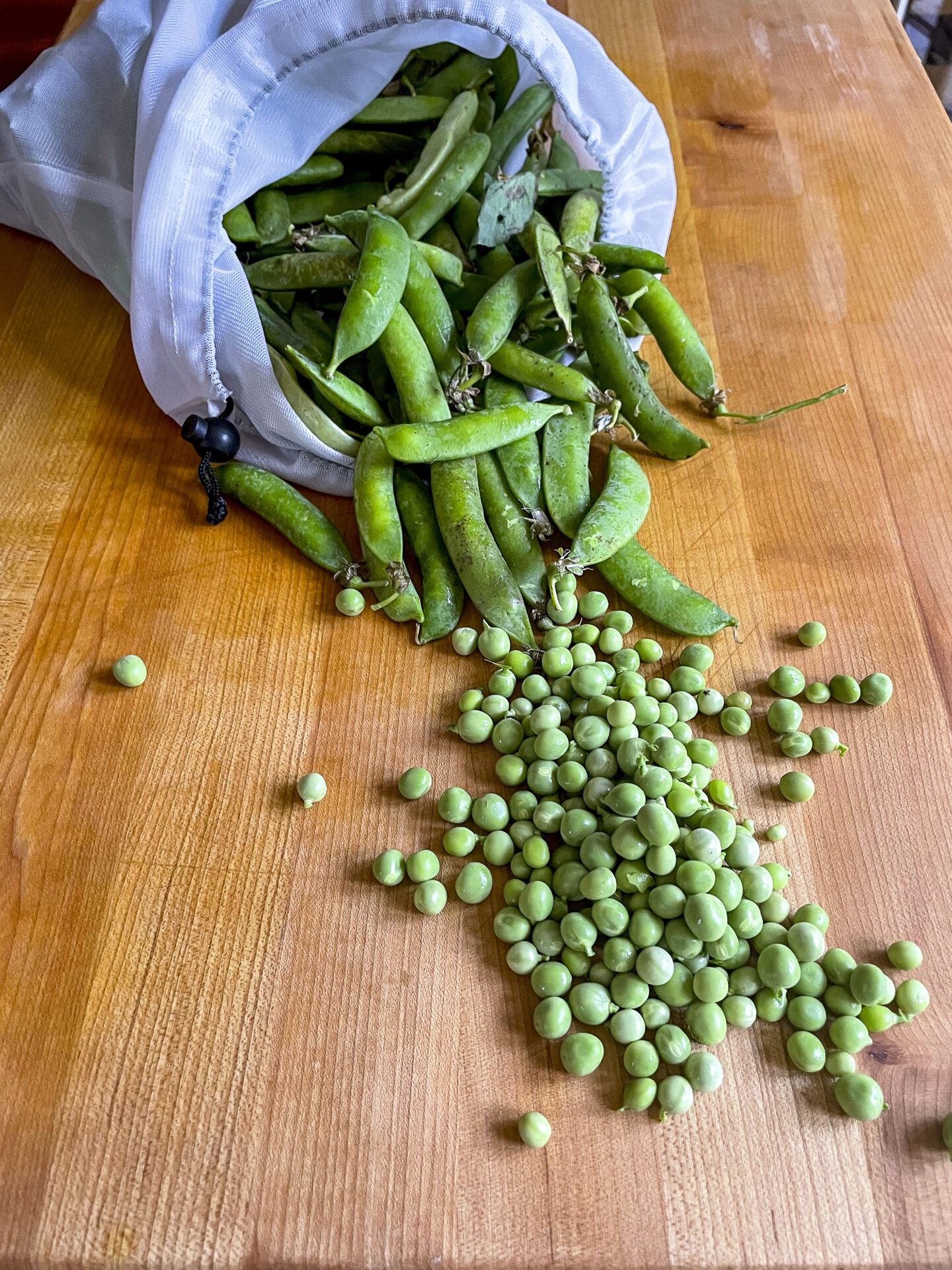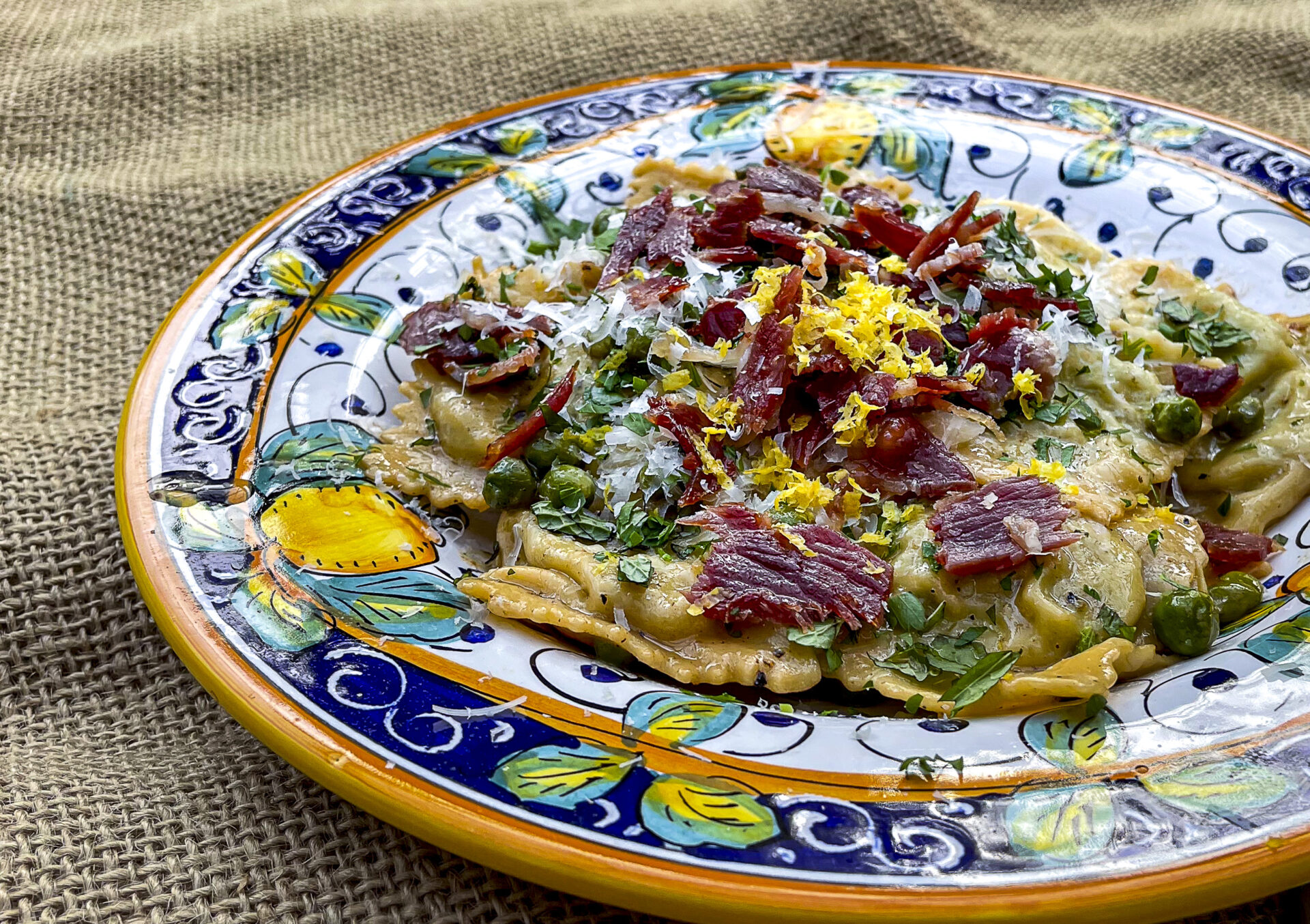
My sister Michele wrote in our last post that springtime is coming into focus. Judging by the plants leafing out here in Southern California, the birds chirping (one bird family has built a nest on top of our porch light), and longer days coupled with the arrival of daylight savings time, the only thing we’re missing is the official spring equinox. There are really great recipes to cook all year round with ingredients of each season, but spring offers more surprises. Browsing the farmers markets this time of year, I often find some uncommon vegetable and go home to look up ideas for cooking with it.
I was at our local farmers market in West Hollywood last week and spotted piles of fresh peas. Now I, like most people, keep a bag of frozen peas in the freezer to use when called for by a recipe, but fresh peas are hard to come by. I started thinking: peas, ricotta, mint, lemon–ingredients that love each other–combined with a bit of something salty: cheese, prosciutto. All of these wonderful flavors together, I concluded, equals spring pea ravioli.
I do think making ravioli is a meditative adventure. We have written many times about my sister and me on a Saturday morning making pasta with our mom. She made ravioli filled with spinach and meat. I think a springtime afternoon is the perfect occasion to make ravioli. Put on some music, get a glass of crisp cold white wine and crank out some ravioli for your family and friends.
Here’s to springtime and friends and warmer weather.
xoxo Joe



Spring Pea Ravioli
Ingredients
- 1 cup shelled fresh peas
- 2 cups loosely grated Parmigiano-Reggiano cheese plus extra for serving
- 2 big mint sprigs, leaves removed from stems, separated ½ for filling and ½ for serving
- ½ cup whole milk ricotta cheese, drained of any liquid
- 1 egg
- 2 lemons, for zesting, use juice of lemons for another purpose
- 400 g. or 3 ¼ cup double-zero “00” flour
- 4 large or extra large eggs
- 4 thin slices of prosciutto
Instructions
Prepare the filling
- In a medium saucepan, bring water to salted water to boil. Add the shelled fresh peas and cook for 4 minutes Drain and let cool. Separate the peas 75 % for filling, 25 % for the serving.
- In a food processor, add the 75% of cooked peas, ricotta, Parmigiano-Reggiano cheese, ½ portion of mint leaves, zest of 1 lemon and 1 egg. Pulse until the mixture is minty green with specks of the peas still remaining. Taste and add salt and pepper, to taste. Cover and refrigerate until ready to use.
Prepare the pasta dough
- Make a large mound of the flour in the center of your cutting board or surface prep area. Form a well in the center of the flour. Add the eggs and a pinch of salt. Using a fork, beat together the eggs and slowly begin to incorporate the flour from the inner rim of the well. Continue until the dough starts to come together. Switch to using your hands. Incorporate the rest of the flour until you have a large ball. Scrape off any excess from the surface. Re-flour the board and continue kneading the dough until it becomes smooth like a baby’s skin, about 5 minutes. Add a little more flour if the dough is too sticky.
- Cover the dough with a kitchen towel and allow to rest for at least 30 minutes at room temperature.
Make the ravioli
- Allow the dough to come to room temperature if refrigerated. Cut the ball of dough into quarters. Cover the dough you are not using immediately to prevent it from drying out. Dust your surface and the dough with a bit of flour. Flatten the piece of dough and roll it through the pasta machine a few times at its widest setting. Reduce the setting and crank the dough through the machine, continuing until the dough is paper-thin (number 5 setting on my machine). You should end up 4 very long sheets.
- Lay out ½ of 1 sheet of pasta. Keep a small bowl of water nearby. Place about 1 tablespoon of the filling every few inches in two rows on the pasta sheet. Brush around the filling with water. Careful place the 2nd ½ of the sheet over the ½ with the filling. Use the side of your hand seal down the center of the two rows and then seal between the individual ravioli. Finally gently squeeze the air out of each ravioli and seal the edges. Cut into squares using a ravioli cutter. Place the finished ravioli on a sheet pan dusted with semolina or cornmeal until ready to use. Repeat with remaining dough and filling.
Note: This is the most dangerous time in making ravioli. Flip the ravioli over on sheet pan until the dough is mostly dry. If you leave them too long on one side, the moisture from the filling will leak into the dough and cause the ravioli to stick to the pan. You can also, place the sheet pan in the freezer and freeze solid and then store them in a plastic bag.
To finish the ravioli
- In a dry sauté pan, lay the prosciutto in the pan and turn to medium-low heat. Gently heat to crisp the prosciutto. Flip on other side. Remove to a plate covered with paper towels. When the prosciutto is cool, crumb it and reserve for serving.
- In a large sauté pan, melt the butter over medium heat until the foam subsides and the butter begins to turn brown. Add the cooked peas. Season the sauce with salt and pepper.
- In the meantime, bring a pot of salted water to boil over medium heat. Gently add the ravioli and cook at a slow boil until the ravioli float to the surface and are tender, about 3 minutes. Remove and taste one raviolo. If you froze the ravioli, they may take longer to cook.
- Carefully remove the ravioli with a spider or slotted spoon and add to the brown butter and peas. Gently swirl around until the sauce is not again and has absorbed into the ravioli. Add the mint leaves, swirl one more time.
- Serve the ravioli with grated Parmigiano-Reggiano, zest of a lemon and the crispy prosciutto.

